The Royal Navy’s HMS Tamar has resumed operations in the Indo-Pacific, with its Force Protection team undertaking live-fire drills during the latest leg of its deployment.
The exercise, announced via the ship’s official social media channels on 11 June, showcased the ship’s crew maintaining readiness in a visually striking maritime setting.
In a series of images released alongside the update, Royal Navy personnel can be seen engaging in small arms training on deck, silhouetted against the open sea and a vivid sunset. The post read: “Back to sea and back to work 💪 TAMAR’s Force Protection team being put through their paces! Always ready. Not a bad setting for a shoot 💥”.
HMS Tamar is one of the Royal Navy’s Batch 2 River-class offshore patrol vessels, designed for long-range deployments and capable of sustained operations far from home waters. Equipped for constabulary duties, surveillance, and low-intensity maritime security operations, the vessel plays a key role in the UK’s persistent naval presence in the Indo-Pacific region.
Deployed alongside her sister ship HMS Spey as part of the Royal Navy’s forward-deployed presence, HMS Tamar supports UK strategic aims by conducting joint exercises, port visits, and maritime security operations across a region increasingly characterised by geopolitical competition.
Her current deployment is part of the UK’s Indo-Pacific tilt—an initiative outlined in the Integrated Review to strengthen defence and security ties with regional allies and partners, as well as to uphold freedom of navigation and international maritime law.
Back to sea and back to work 💪
TAMAR’s Force Protection team being put through their paces! Always ready. Not a bad setting for a shoot 💥#RoyalNavy #IndoPacific pic.twitter.com/lKKHl8XXUS
— HMS Tamar (@hms_tamar) June 11, 2025
The ship itself
HMS Tamar is one of five Batch 2 River-class offshore patrol vessels built for the Royal Navy. Designed to deliver forward presence and maritime security tasks, these vessels provide a flexible platform for constabulary duties, including counter-piracy, counter-smuggling, and support to partner nations. Unlike traditional patrol vessels, the Batch 2 class is built to Royal Navy warship standards, allowing for deployments in complex and distant operational environments.
At 90.5 metres in length with a displacement of approximately 2,000 tonnes, HMS Tamar features a flight deck capable of accommodating a Merlin helicopter, though the vessel has no hangar for long-term air operations. The ship’s armament includes a 30mm automatic cannon, supplemented by machine guns and the capacity to embark Royal Marines or other embarked forces. She also carries two Pacific 24 sea boats for boarding operations.
Powered by two MAN diesel engines, HMS Tamar can reach a top speed of around 24 knots and has a range of over 5,000 nautical miles, enabling prolonged deployments with limited logistical support. The ship is crewed by a core complement of around 45 personnel, though it has accommodation for up to 50 additional embarked troops or specialists. The design emphasises efficiency and endurance, suitable for long-distance operations and persistent presence tasks.
Commissioned into the Royal Navy in 2020, HMS Tamar is currently forward-deployed in the Indo-Pacific region alongside her sister ship HMS Spey. This deployment forms part of the UK’s strategic commitment to the region, supporting alliances and upholding maritime security in key international waters. As part of this mission, the vessel conducts joint exercises, port visits, and maritime surveillance to promote regional stability and deter illicit activity.


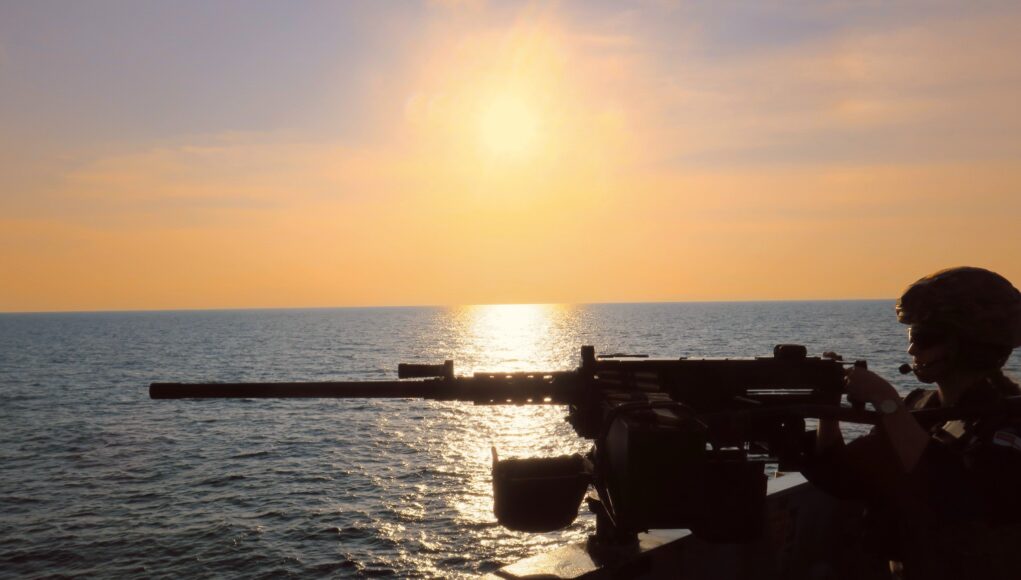

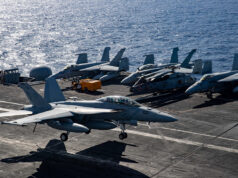
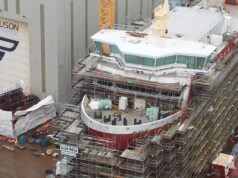
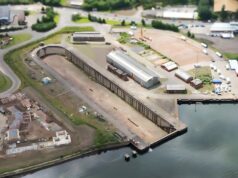
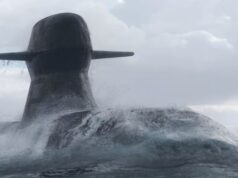
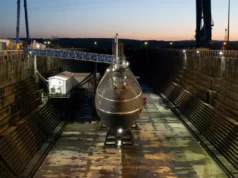
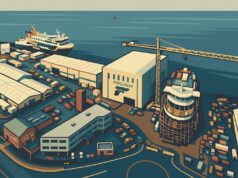
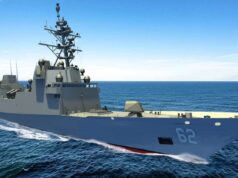
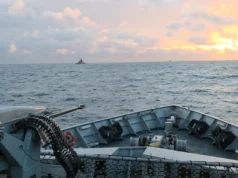


I really hope we can keep these ships once the T31 is finished. They are fantastic for theatres like the pacific islands and west Africa.
We should really get drones onboard ASAP to improve their ISTAR capability,
They are fantastic for patrol of UK home waters. The fact that they are deployed the way they are today is illustrative of the Royal Navy’s massive weaknesses. The Royal Navy’s Far East Fleet of the 1960s was a reasonable “presence” east of Suez. Two, basically unarmed, patrol boats are just two basically unarmed patrol boats.
I still do not get how people criticize using patrol vessels for patrol vessel tasks, maintaining a single frigate in Asia offers very little additional capability during peace time and come at significant costs, both to the over all operational readiness of the fleet and to personal. These ships plod around patrolling, visiting ports, provide highly valuable training personnel and get to experiment operationally with new technologies alongside other navies, they are not escorts or fighting ships and if they were that would limit their ability to be cost effective at the core job of patrolling.
We have two more ‘unarmed patrol boats’ permanently the Pacific region than any of the other European navies have, that’s an achievement in itself and we’ve developed infrastructure in SEA to maintain them long-term in that region, again another huge achievement and capability not many other navies have. We could deploy a GP frigate when the fleet has been renewed but we will still need our ‘unarmed patrol boats’ around to do the menial taskings in that area otherwise the same people start making comments about how we are wasting our principle fighting ships doing constabulary work…
You must remember the basis of any effective permanent presence is the ability to patrol and that’s exactly what we maintain; the USCG, PLAN and all other major fleets have dozens of similar ships doing the exact same thing but that never gets media attention and thus criticism like our B2s do.
Great post.
Spot on in my view.
Very objective and correct.
It strikes me, a land lubber, that the potential these ‘small’ vessels maybe seriously underestimated. Crew training and experience in theatre anyone?
The French Navy has two second-rank frigates plus additional OPVs/patrol vessels in the Pacific. It has another two frigates and additional patrol vessels in the Indian Ocean. These are also essentially sovereignty protection vessels but they significantly surpass the RN’s regional capability. … as you say, the RNs two patrol boats are a peacetime “sailing around to engage with allies capability”. But that’s all they are. And increasingly there is very little behind them. Indeed, the Prince of Wales carrier group (which at best can only remain east of Suez for a few months) essentially represents the RNs entire sharp end capacity. It is not surprising that the Americans are saying that they really don’t need the RN in the Pacific.
Roy, the Floreals are hardly Frigates anymore, they’ve been stripped of anything that makes them a principal surface combatant. At 2,000t, 20knots, and armed with little more than a 100mm gun, they are effectively nothing more than an OPV now.
Great post, but I will point out that France actually has considerably more ships permanently deployed to the Pacific area than we do;
They have a couple of POM’s (about half the size of a River OPV armed with a 20mm) based there, a couple of Multi-Mission auxiliiaries armed only with 7.62 machine guns, and two old Frigates that they have removed most of the combat equipment from and downgraded to OPV’s.
The Floreals are indeed second-rank frigates. But they vastly out pace the River Batch IIs in terms of capability. The, and the secondary OPVs France deploys there, also have a real dedicated mission: sovereignty protection. They aren’t just aimlessly wandering around the Pacific/Indian Ocean like some sort of naval Don Quixotes.
Spot on, I’m fed up of hearing arm chair admirals decry our lack of Dreadnaughts.
No one has complex warships in the pacific islands and the vast majority of issues in the SCS are better met by OPV’s because almost the entire Chinese presence is fishing boats, naval militia and coast guard.
As you say no one bats an eye lid at US and Chinese coast guard cutters around the world but some how it’s a failure of the royal navy that we don’t have billion pound destroyer circling Tonga.
It’s also worth noting that back in the apparent good old days of the 80’s or 60’s most of the frigates we had had about as much armament as a B2 river and were of similar size.
“no one bats an eye lid at US and Chinese coast guard cutters around the world” … on the contrary, one notices them because there is power behind them. … there is increasingly less and less behind RN patrol boats.
“in the apparent good old days of the 80’s or 60’s most of the frigates we had had about as much armament as a B2 river and were of similar size” … not accurate. A 30mm gun in the 2020s is also just a 30mm gun in the 1960s. Most British frigates in the 1960s were real frigates for the day. The RN of 1960 had 150 destroyers/frigates; even in 1970 there were still 80 destroyers/frigates. … There is simply no comparison between the RN of the 1960s and the RN of today.
Agreed. These vessels are multi-functional and they put flesh on British foreign policy. We have numerous economic and military interests in the pacific region. The visible presence of the RN is a powerful symbol. It might only be an OPV but it carries with it the reputation of the RN which is far more powerful than any gun. If this government withdraws them, it would be short sighted at best.
Two OPV’s East of Suez is the RN of the 21st century in that region. I remember the Tories of the 1960s insisting on this minimum then! Changed times! The OPV’s are wonderful assets for the tasks at hand and have proved to be a sensible and much less expensive solution vs having tied down modern frigates for these roles over many years! In an MoD request for public comment in the early 2000s I voted against the scrapping of the QEs after about 400 million already spent, and the expansion of the OPV fleet to free up the front line. The Admirals listened to me 🙂 🙂
Cheers from chilly early morning Durban 8 degrees C rising to 23 degrees mid-day
Beggars cant be choosers but an edit facility would be nice. The Tories of the 1960s insisted on Two Carriers East of Suez.. was missed from my previous post
Perhaps an extra Type 31 to replace them?
ROFLMAO. A Type 31 couldn’t even do what one OPV can in terms of presence, much less two! The OPVs are designed to spend a lot of time operational and at sea, and if they run a triple rotating watch they can put in close to 300 sea days a year with around 70 crew (around 50 at any one time). A Type 31 will need over 100 crew, or nearer 200 if they are dual crewed in order to get close to the same number of sea days. However, more maintenance for a more complex frigate will mean they’ll never quite make it.
A Type 31 should be a warship not an OPV. Let the cheaper to buy, cheaper to maintain, cheaper to operate OPVs do what they are good at, and let the Type 31s train for war.
Nice idea. Unfortunately, we’re pulling the OPVs back home, and we need something to replace them. At the moment, the Type 31 is the best bet, unless we restart OPV production. That’s why I mentioned it.
The OPVs have a shelf life, let’s just hope the navy decide to plan for their replacement a long time before they need replacing… Ie start planning now
Pulling the Batch 2 OPVs back to home water is a very stupid policy, which has no advantage that simply cutting more ships and capability doesn’t also do. It’s a cost saving measure that uses our ships in the least efficient manner possible. Home waters don’t even need something as big as a B1 River, nevermind a B2. We could buy something much smaller for £40m.
Instead, we’ve spent £350m on a Type 31, to (badly) replace a B2 River and the B2 River will replace a home waters patrol vessel. So we are spending £350m to degrade capability that we could have maintained by buying a £40m vessel.
Is it worth potentially having the CSG hold position in the Arabian Sea given the potential for a NEO from across the Middle East